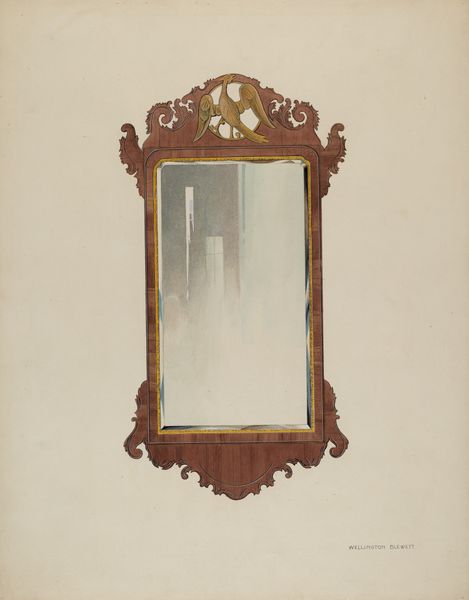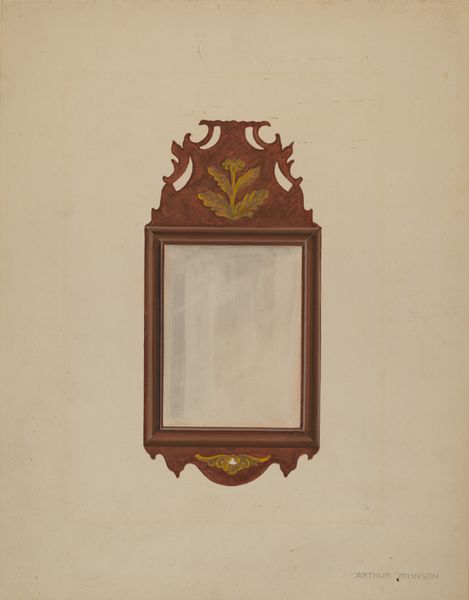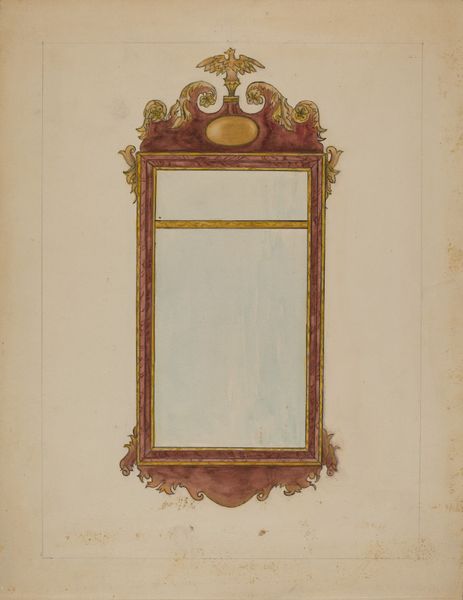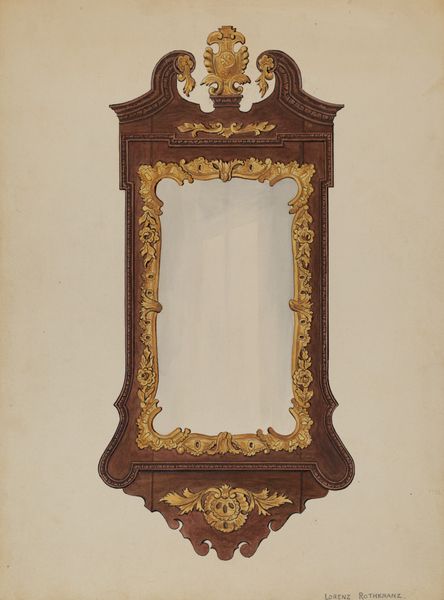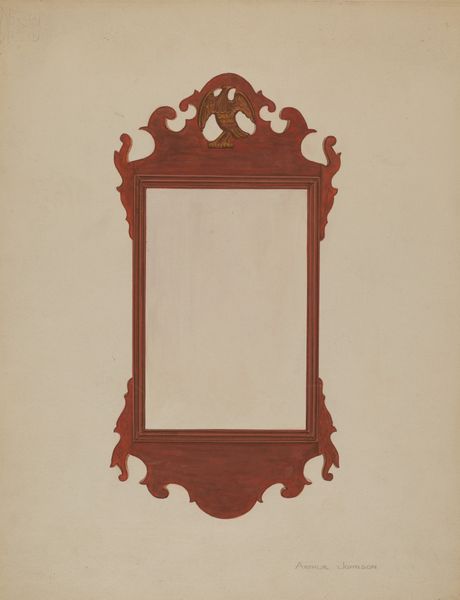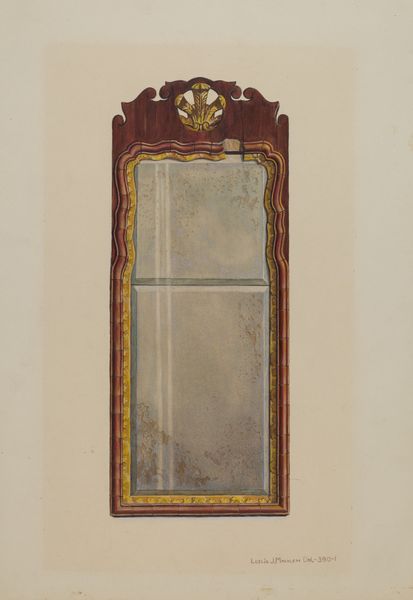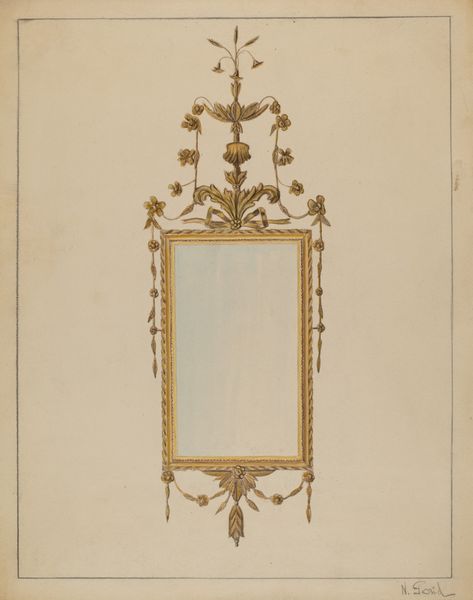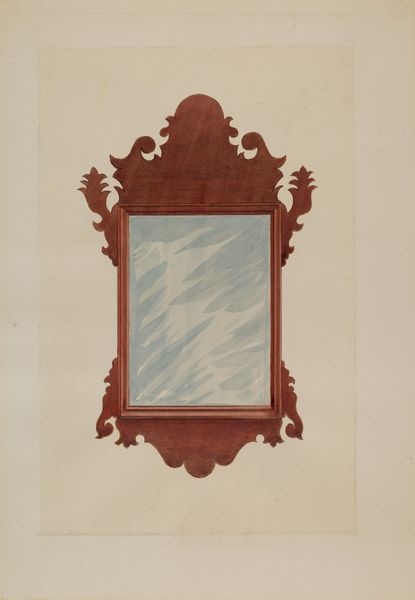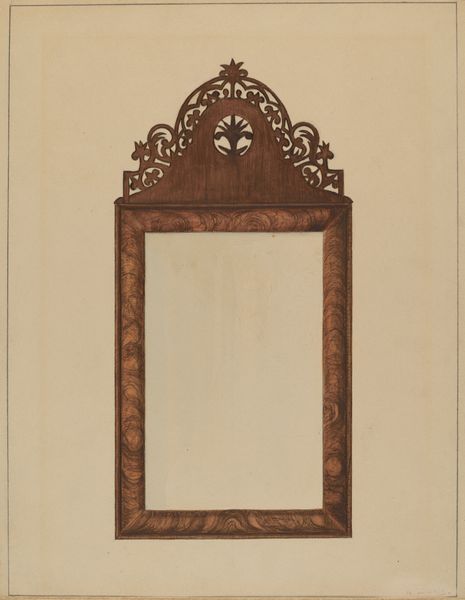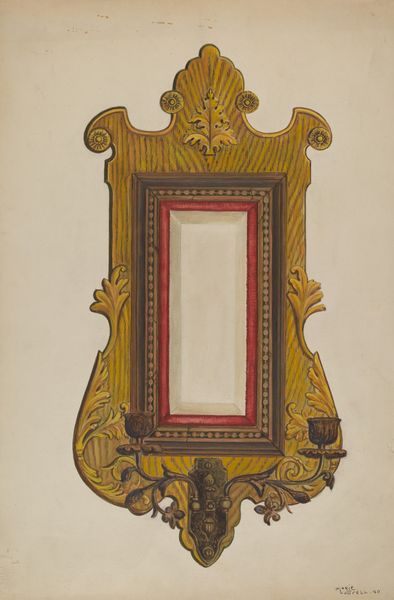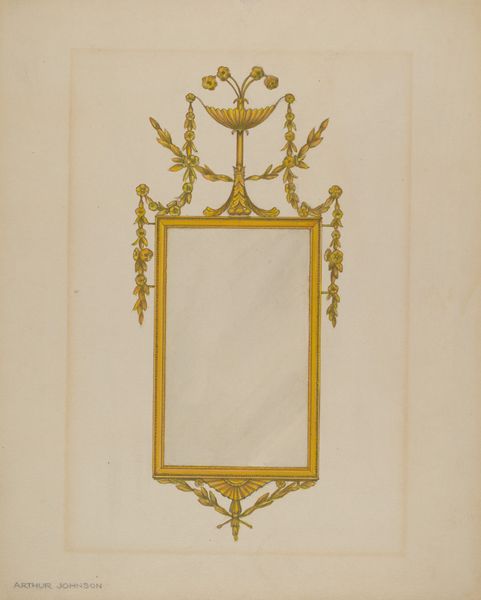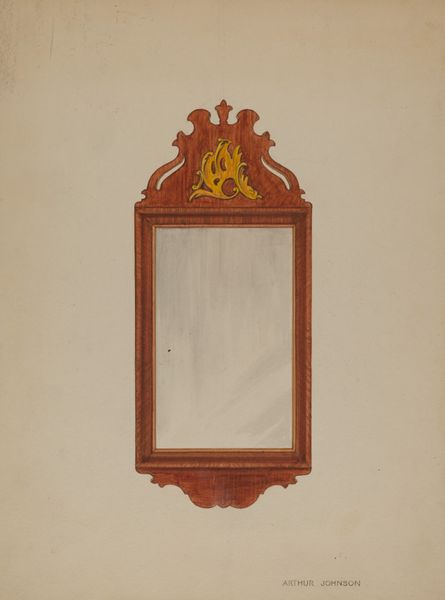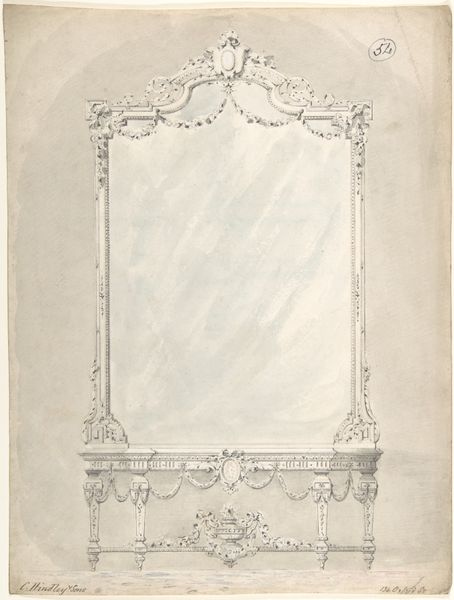
drawing, watercolor
#
portrait
#
drawing
#
watercolor
#
geometric
#
decorative-art
Dimensions: overall: 29.3 x 22.9 cm (11 9/16 x 9 in.) Original IAD Object: 38"high; width, center: 16"; 19 3/4"wide, bottom; See d.s. for dets.
Copyright: National Gallery of Art: CC0 1.0
Editor: This watercolor drawing, "Mirror," was created around 1937 by Arthur Johnson. I find it intriguing, but almost stark. The level of detail seems almost at odds with the sparseness. What do you make of it? Curator: The decorative frame immediately draws my attention. Consider the process—the artist rendering wood grain, mimicking a material widely available and consumed. The use of watercolor challenges the inherent value placed on "original" craftsmanship. Is Johnson elevating the *idea* of the mirror above its practical function, almost like a critique of mass-produced items? Editor: I never thought of it that way, more like an aesthetic exercise. Curator: Precisely. Now think about the golden eagle perched atop. The application is distinctly different than the rest of the design; what is the function here, as juxtaposed to the almost manufactured look and feel of the frame? How does this combination of elements, rendered through humble materials, play with notions of value, artistry, and even patriotism? Editor: It certainly highlights the economic context of its creation. Maybe he is drawing parallels between decorative excess and American symbolism? Curator: Exactly. Johnson prompts us to consider the role of art in mirroring not just our appearance, but also the material conditions of society. Are we consuming an image, or the labor that created it? Editor: It's definitely made me rethink what decorative art can say about the culture that produces and consumes it. I'll never look at a mirror the same way. Curator: Me neither!
Comments
No comments
Be the first to comment and join the conversation on the ultimate creative platform.
